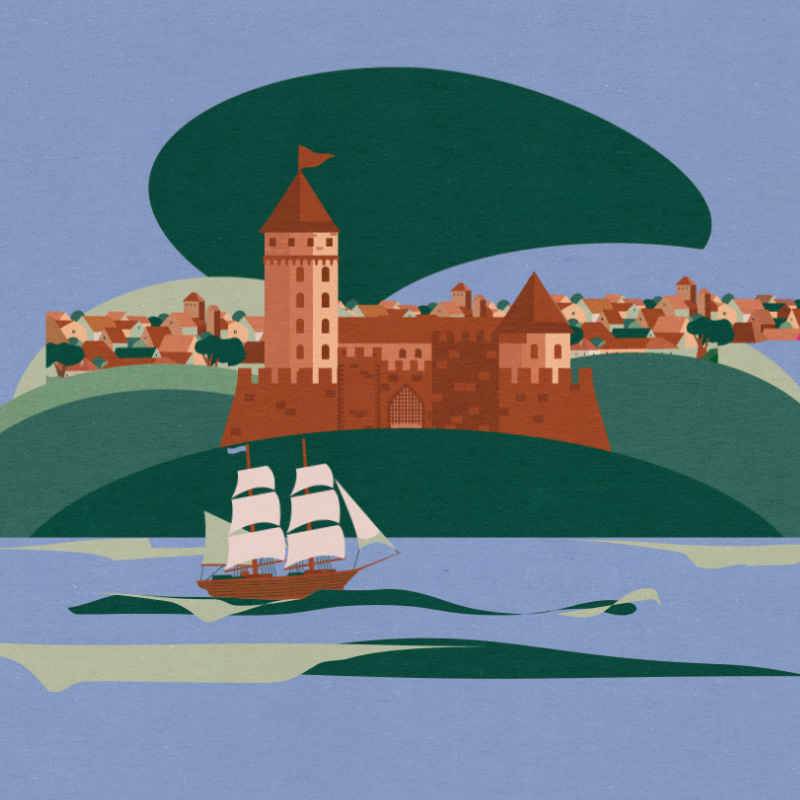Where Did the Memelburg Castle Disappear?
> BACK TO 100 STORIESThe Grand Duchy of Lithuania existed from the thirteenth to the eighteenth century. It fought against the Teutonic Order and the Livonian Brothers of the Sword, which later merged into the Livonian Order, for two hundred years. Once the Order united, its lands were separated by the province of Samogitia, so they spent a long time trying to conquer this territory without success. For this purpose, Master Eberhard von Seyne founded Memelburg Castle in 1252 in the present territory of Klaipėda, which at that time also belonged to the Order. Although almost completely destroyed, it is currently the only castle of the Order in Lithuania.
Why was the castle named after Memelburg, and Klaipėda, the city next to it, renamed as Memel? Memel was the name the Germans gave to the river Nemunas, and the Curonian Lagoon was simply thought to be the vast delta of Nemunas – an expansion before the river joined the Baltic Sea. So the city and the castle were named after the German name of Nemunas.
The first Memelburg castle was built of wood and fortified with embankments. Just a year after its construction, the castle was attacked by the Sambians (a Prussian tribe from the Sambia Peninsula) and the Samogitians, who damaged it considerably, but didn’t manage to capture it. The Samogitians wanted to destroy the castle because they were worried that the Livonian Order would start invading their lands, and the Sambians feared that the order would interrupt trade on the shores of the Baltic Sea. The castle was rebuilt in stone rather than wood, which burns easily.
The Order hoped that the city of Memelburg would grow around the castle and that it would become as powerful as the port cities of Riga and Danzig. But that didn’t happen. The stone castle and the city developing next to it were constantly attacked. After the Samogitian attack in 1379, the castle and the city burned down and it took a really long time to rebuild everything.
After the collapse of the Order and the establishment of the Duchy of Prussia, the castle was rebuilt again in 1529. Once again, it was expected that the castle, renamed Klaipėda, would become the strongest and most modern Prussian fortress. A seven-storey tower with rooms for the duke rose above the castle. The castle itself was now three stories high, so it stood out among the low buildings of the city.
Unfortunately, the castle once again did not live up to the expectations of its builders. Although it ensured the safety of the sea route from Königsberg to Riga for a long time, it was often attacked by the Swedes, and after the Seven Years' War (1756–1763), when Russians occupied the city and the castle, it was ruined and abandoned. Over time, the stones and bricks of the castle were taken apart and sold as building materials. The last walls were torn down in 1872–1874. After the uprising of 1923 Klaipėda finally became part of Lithuania and the castle was no longer necessary so it was almost completely destroyed.
Today, only bastions and cellars remain of Memelburg, or Klaipėda, castle. The branches of the History Museum of Lithuania Minor – Klaipėda Castle Museum and the Museum 39/45, which covers the history of Klaipėda during World War II – are based there. There are plans to rebuild Klaipėda Castle, but not exactly as it was in the eighteenth century. The aim is to restore the external shape of the building, but to adapt it to the completely different purposes – for tourism and representation of the city.

